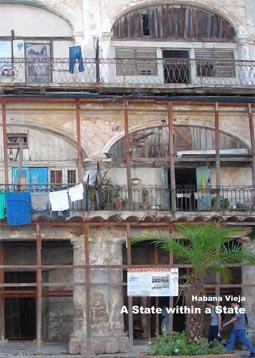Habana Vieja - A State within a State

Students: Karin Ammann, Joanna Kwiatkowska
Location: Group work in Havana
Date: June, 2007
Type: Research project, student work, state-driven urban renewal
One of the specific phenomena coming to the fore as a result of economic changes in Cuba is the state organized urban renewal of the old historical cores of cities. Acute deterioration of the entire built structure as well as some of the most valuable urban areas still persists as a problem. Without a possibility to generate income through liberal foreign investment, alternative models for crisis management of decrepit historical areas had to be found.
Havana Vieja, the old colonial core of Havana, developed in the XVI and the XVII centuries, became a UNECSO World Heritage site in 1982. Proclamation of this heritage status was a result of the progressive deterioration the old city had undergone since the XIX century, resulting in a situation in which ‘the former magnificent palaces in the Old Havana are subdivided and turned into living quarters of a number of families crammed into squalid rooms…’ In 1994, a neo-liberal model was found for the rehabilitation of the Old Havana: a state company Habaguanex was set up, in direct link with the national government as well as with UNESCO and beyond municipal decisions. Its task is to introduce high quality tourist facilities, without compromising the heritage principles and at the same time to return some social benefits to the local population. Today, 60% of all tourists in Cuba visit Havana Vieja, about one million per year.
This case study will shed light on actors and forces (governmental, special commissions, legal, administrative, foreign investments, public, etc) that shape the present urban renewal projects in Havana, in particular Havana Vieja. Their respective interests, relations, conflicts and achievements will be investigated.
Download the Book PDF

